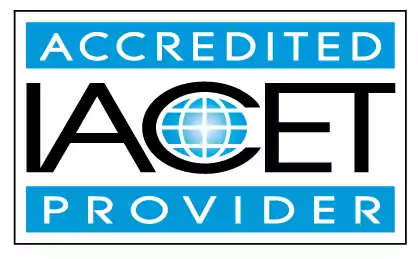Teachers will demonstrate a variety of ways for families to be represented in their classrooms when they are not physically present.
Teachers will demonstrate a variety of ways for families to be represented in their classrooms when they are not physically present. Additionally, this page will provide guidance on how teachers can address challenging behaviors in the classroom. Learn effective strategies for involving families and managing behaviors in early childhood education and child care centers.Trainings incorporating this outcome
Proficiency Level
Price
States
Alabama (1) Alaska (1) Alberta (1) Arizona (1) Arkansas (1) Australia (1) California (1) Colorado (1) Connecticut (1) Delaware (1) District of Columbia (1) Florida (1) Georgia (1) Hawaii (1) Idaho (1) Indiana (1) Iowa (1) Jamaica (1) Kansas (1) Louisiana (1) Maine (1) Manitoba (1) Maryland (1) Massachusetts (1) Michigan (1) Minnesota (1) Mississippi (1) Montana (1) Nebraska (1) Nevada (1) New Hampshire (1) New Jersey (1) New Mexico (1) New York (1) Newfoundland and Labrador (1) North Dakota (1) Nova Scotia (1) Ohio (1) Oklahoma (1) Oregon (1) Pennsylvania (1) Prince Edward Island (1) Puerto Rico (1) Quebec (1) Rhode Island (1) Saskatchewan (1) South Dakota (1) Texas (1) Thailand (1) United Kingdom (1) Utah (1) Vermont (1) Virgin Islands (1) Virginia (1) Washington (1) West Virginia (1) Wisconsin (1) Wyoming (1)
2 hours courses
Related Outcomes
- Give examples of ways for families to be included and represented in the classroom, even when they are not physically present.
- Teachers will identify different ways to communicate with families
- Demonstrate an understanding of the Coordinated Family and Community Engagement (CFCE) Network and Family Resource Centers.
- Describe the various ways teachers can address challenging behaviors in the classroom.
- Demonstrate an understanding of the most effective way to listen to a child.
- Demonstrate understanding of the role of family in society
- Demonstrate an understanding of how to create a natural outdoor classroom that supports child development in all areas.
- Demonstrate understanding of developing positive relationships with childcare families
- Students will demonstrate ways to ask open-ended and creative questions
- Demonstrate understanding of optimal room arrangements for family child care settings and their components.
- Demonstrate appropriate/effective responses as they relate to a variety of typical child care scenarios.
- Demonstrate an understanding of the physical, emotional, and motor development in children five to twelve years of age
- Demonstrate an understanding of teacher vs. child directed activities.
- The childcare professional will demonstrate an understanding of the value and importance of complex characteristics of children’s families and communities
- Demonstrate an understanding of the value and importance of complex characteristics of children’s families and communities
- Describe ways to analyze classrooms for an anti-bias approach.
- Demonstrates understanding of developing positive relationships with child care families
- Demonstrate an understanding of how to implement an Individual Family Support Plan.
- Give examples of ways to apply and model ethical behavior and professional integrity with families.
- Demonstrate an understanding of physical growth and development in school age children and the impact it has on programming
Related Articles
- Cross-Cultural Toilet Training Practices
- How Can Culture Affect A Child’s Development?
- Culturally Sensitive Classrooms
- Child care education
- How your child's sensory toys serve as portals to different imaginative worlds
- Every Child Matters: Practical Tips for a Safe and Inclusive Classroom
- How to Make Your Circle Time More Inclusive for All Learners
- Handle Tiny Humans with Care: Trauma-Informed Care Tips for Early Childhood Educators
- How Educators Can Create Joyful, Inclusive Celebrations
- Welcome to New York: Early Childhood Education
- How Do I Create an Inclusive Environment for Children with Diverse Needs?
- 🧩 How Do I Support a Student with Autism While Managing Classroom Behavior and Learning? 💕
- What Are Creative Ways to Keep Families Engaged in Your Program Year-Round?
- 🌟 How Can You Protect Children’s Health and Happiness in Every Learning Environment?
- 🧸 How Can Everyday Safety Transform Your Child Care Environment?
- Creating Inclusive Events that Celebrate All Families and Cultures
- 🌍 How Can Culture, Communication, and Collaboration Improve Child Assessment?
- 🌎 How Do I Support Diverse Families While Honoring Their Culture and Values?💜
 0.2 CEUs
0.2 CEUs